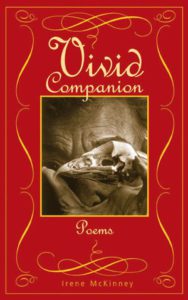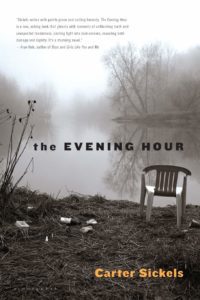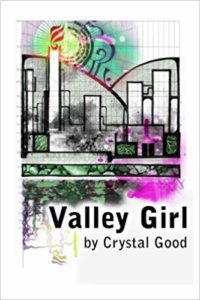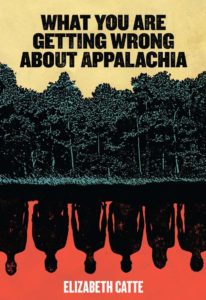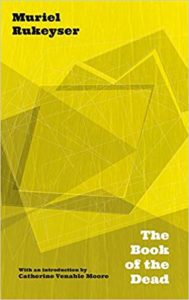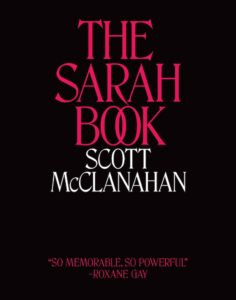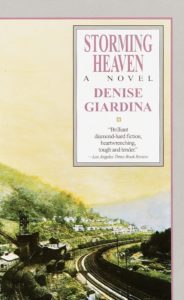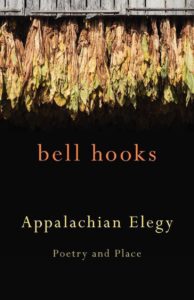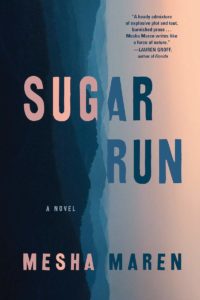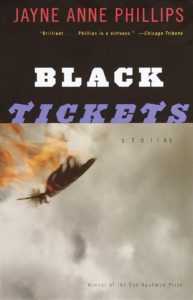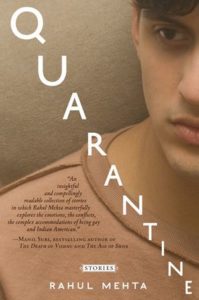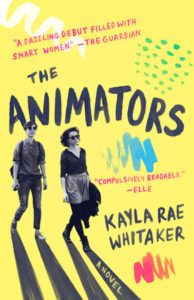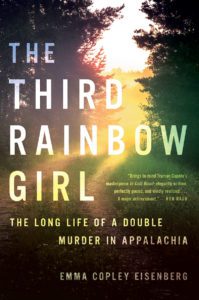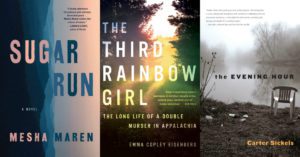
So many stories about any place, and none of them totally true. But I expect you could tell the one we usually hear about Appalachia in less time than it takes to boil water. This isn’t for lack of options, it turns out, but for lack of listening. The stories are out there, the people within these stories are out there and in here too—in your classroom and subway car and family tree—for the ties that flow between American Appalachia and other parts of our nation are more fluid and more direct than is ever acknowledged.
It is my great fortune to have crossed paths, in the physical world or some other one, with all of the writers below. Whether they live inside Appalachia or outside it, are from Appalachia or moved there later, yearn urgently for that place or relish their escape from it or both at the same time, each of their work deals carefully and unforgettably with what it means to be American and also uniquely Appalachian, to carry that particular additional layer of physical experience and wild insight.
***
Vivid Companion by Irene McKinney
McKinney is a high priestess poet of anger and precision and survival who doesn’t get her due. If Dorothy Allison and Grace Paley met, fucked, and magically procreated, McKinney could be their daughter. In her poem “At 24” she writes, “Dear Mr. President, I said, Dear Dean / Dear Husband, Dear Our Father, Dear Tax Collector / you don’t know me. I don’t know what I am / but whatever it is, you can’t have me.” Yowza!
The Evening Hour by Carter Sickels
There may perhaps be no more defining feature of the life I briefly knew in central Appalachia than contradiction and Sickels’s debut novel about a queer nursing home aide in rural Kentucky who heals with one hand and sells opiates with the other drags the darkness that can come with that feeling of both-ness or neither-ness into the light. The insights shimmer. There is no other book quite like this.
Valley Girl by Crystal Good
Good’s poem “Boom Boom,” has become a kind of anthem for the way Appalachia’s resources, both natural and emotional, have been systematically extracted and used for the good of those who live elsewhere. It is also, like the rest of this collection, sexy, funny, harsh, joyful, and deeply about what it means to be Affrilachian, or both black and Appalachian in a region that outsiders wrongly assume is entirely white.
What You Are Getting Wrong about Appalachia by Elizabeth Catte
This is also Catte’s territory, the way outsiders often wrongly assume that “Appalachian” means a single story. If you’re looking for a smart, succinct, modern, and intersectional book that will introduce you to many of the important basics of Appalachian history and theory and how we got here (Appalachia being viewed as “the heart of Trump country”) and why that’s wrong (more rich white people voted for Trump than poor white people!), Catte’s book is the best. I also highly recommend following this influential public historian on Twitter at @elizabethcatte for excellent anti-J.D. Vance zingers.
“Life and Death in West Virginia” by Christa Parravani
We are complicated in Appalachia, we outsiders—and Parravani is an outsider, just like me. But if antiracist white people are to “come get our boy,” sometimes it takes an outsider to talk to other outsiders. Parravani’s essay—which has become the book Loved and Wanted, out September 2020—about the baby boy she sought to terminate but was made to keep through a series of social sanctions, logistical hurdles, and the not-quite-legal way abortion is viewed in some counties in West Virginia shows how the forces that shape life for women and queer people in Appalachia shape life for all of us. They are we and we are they; we are all connected.
“The Book of the Dead” by Catherine Venable Moore
“I cannot live inside the story of this film, I remember repeating to myself, like a chant,” writes essayist and researcher Moore on watching yet another documentary chronicling the victimization of the Appalachian people. “That can’t be my story because nothing lives there.” This piece, published in The Oxford American, also chronicles devastation, in this case the Hawk’s Nest Tunnel disaster of the 1930s in which between four hundred and a thousand workers, many of them black men who had moved to West Virginia in search of jobs and freedom, were killed from effects of exposure to the silicon they were forced to mine. Yet somehow Moore makes the piece as much about life and humanity as it is about death and depraved indifference. Moore also wrote the introduction to the reprint of Muriel Rukeyser’s The Book of the Dead, out last year from WVU Press.
The Sarah Book by Scott McClanahan
Fans of McClanahan’s intense, irreverent, and lyrical work swear by his memoir Crapalachia: A Biography of Place, but personally I’m all in for The Sarah Book. There’s something about this Appalachian love story of a shitty guy whose smart wife won’t take him back so he sleeps in the WalMart parking lot and remembers a lot of things that just feels right to me. I’ve been that guy myself, a time or two.
Storming Heaven by Denise Giardina
I first read Giardina’s Storming Heaven aloud by flashlight to a dark tent full of half-snoring, half-wired teen girls—which feels exactly like how this book should be read. Giardina tells her story from the inside of the West Virginia Mine Wars, in which exploited miners went to straight-up war with the mine companies, their hired guns, and the United States government. With a gripping plot and lovely protagonist, the book engraves this era of Appalachian and American history and revolution on the cultural consciousness, and should be more widely read.
Appalachian Elegy: Poetry and Place by bell hooks
Let us never again speak of the other Elegy written by a right wing Breitbart contributor and instead hail this one forever. “Living in the Kentucky hills was where I first learned the importance of being wild,” writes hooks in this memoir cum essayistic meditation on the Kentucky where she was raised and to which she has returned (she is a professor at the innovative Berea College in Kentucky), and the ways it shaped her artistic and political consciousness.
Sugar Run by Mesha Maren
Maren’s novel about a queer woman getting out of prison and returning home to her West Virginia community received industry accolades when it was published by Algonquin last year, and rightly so. The quality of Maren’s sentences astounds and the turns in imagery and logic rewire the reader’s brain. Rarely have I ever encountered a text that so deeply disassembled me and then put me back together, whole but changed.
Black Tickets by Jayne Anne Phillips
Many of the writers on this list, Maren included, may be writing in Phillips’s artistic lineage. Phillips is a West Virginia writer who exploded onto the scene at tweny-six with this collection of “one page fictions, inner soliloquies, and family dramas.” Its formal innovation and its rendering of the way being away from the place you’re from can fracture you beyond repair will keep this book in relevant circulation for a long time.
Quarantine by Rahul Mehta
As chronicled in his piece for the New York Times, Mehta is the child of South Asian immigrants to West Virginia who participated in a large Hare Krishna church in the central part of the state. He’s also a distinguished writer and queer man. The stories in Quarantine, particularly the title story, probe and explode these overlaps and gaps in identity, the sadness of not being able ever to be one’s totally whole self and the moments of grace when we are.
The Animators by Kayla Rae Whitaker
Rarely are we given the smart propulsive novel of our dreams that centers a strange and uncategorizable relationship that is not romantic but neither quite platonic, and rarer still is that relationship one between two women. Whitaker, from Kentucky, wrote a book about friends and artistic collaborators that takes readers to Appalachia and is so dazzlingly true and complicated and satisfying that when I finished it I sighed and thought, why do I even bother trying?
“To Stay in the Loving Arms of Our Mountains” by Rachel Garringer
A native of Pocahontas County, West Virginia, Garringer is a writer, scholar, and founder of Country Queers, an oral history project that documents the rich and vibrant experiences of being queer and trans in the mountains today. In this piece—and in all of her work—Garringer questions an assumption that threads through the work of every writer on this list: to thrive, I have to leave Appalachia. Garringer is part of a growing movement of young people who are working together to find ways not only to stay and to survive in central Appalachia, but also to live.
To close out this wonderful list, we just had to include Emma’s debut nonfiction book, The Third Rainbow Girls: The Long Life of a Double Murder in Appalachia, out now from Hachette Books! – Ed.
The Third Rainbow Girl: The Long Life a Double Murder in Appalachia by Emma Copley Eisenberg
In the early evening of June 25, 1980 in Pocahontas County, West Virginia, two middle-class outsiders named Vicki Durian, 26, and Nancy Santomero, 19, were murdered in an isolated clearing. They were hitchhiking to a festival known as the Rainbow Gathering but never arrived; they traveled with a third woman, however, who lived. For thirteen years, no one was prosecuted for the “Rainbow Murders,” though deep suspicion was cast on a succession of local residents in the community, depicted as poor, dangerous, and backward. In 1993, a local farmer was convicted, only to be released when a known serial killer and diagnosed schizophrenic named Joseph Paul Franklin claimed responsibility. With the passage of time, as the truth seemed to slip away, the investigation itself caused its own traumas—turning neighbor against neighbor and confirming a fear of the violence outsiders have done to this region for centuries. Emma Copley Eisenberg spent years living in Pocahontas and reinvestigating these brutal acts. Using the past and the present, she shows how this mysterious act of violence has loomed over all those affected for generations, shaping their fears, fates, and the stories they tell about themselves.

